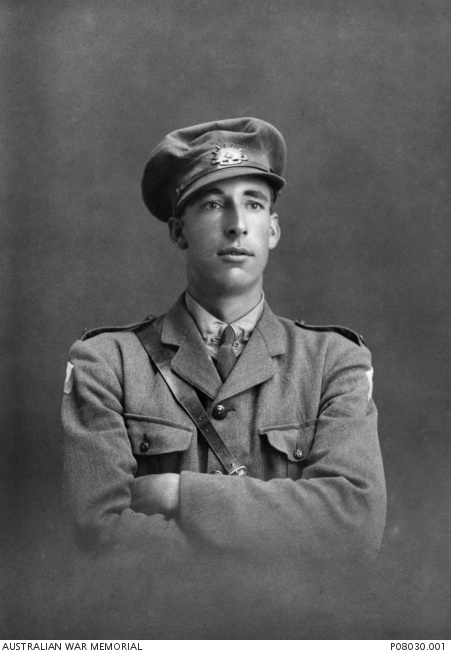2nd Lt
Ellis Austin William Smith
Information about birth
|
Date of birth: 18/08/1894 |
|
Place of birth: Perth, Western Australia, Australia |
General information
|
Profession: Wool Classer |
Army information
|
Country: Australia |
|
Force: Australian Imperial Force |
|
Rank: Second Lieutenant |
|
Service number: / |
|
Enlistment date: 17/08/1914 |
|
Enlistment place: Perth, Western Australia, Australia |
|
Units: — Australian Infantry, 28th Bn. (Western Australia) (Last known unit) |
Information about death
|
Date of death: 20/09/1917 |
|
Place of death: Garter Point, Zonnebeke, Belgium |
|
Cause of death: Killed in action (K.I.A.) |
|
Age: 23 |
Memorial
|
Ypres (Menin Gate) Memorial Panel: 23 |
Distinctions and medals 3
|
1914-15 Star Medal |
|
British War Medal Medal |
|
Victory Medal Medal |
Points of interest 3
| #1 | Place of birth | ||
| #2 | Enlistment place | ||
| #3 | Place of death (approximate) |
My story
Second Lieutenant Ellis Austin William Smith, a former wool classer, served in the 28th Australian Infantry (Western Australia) Battalion which was part of the 7th Australian Brigade, 2nd Australian Division. He previously served as a Gunner (regimental number 1862) in the Field Artillery during the Dardanelles campaign. On the 20th of September 1917 the 7th Australian Brigade took part in the Battle of the Menin Road Ridge on the 20th of September 1917.
The 7th Australian brigade attacked three objectives. The 25th battalion, with the 27th battalion in support, attacked the first two objectives at 5:40 a.m. After both were successfully captured, the 28th Australian Infantry Battalion, which was reserve, advanced at 8:10 a.m. and successfully captured the final objective. At 10 a.m. the consolidation of the new line was started and no German counterattacks were reported for the rest of the day.
All witnesses in the Red Cross File of Second Lieutenant Smith agree that he was killed by a shell while holding the line. Most say that the event happened during the day or evening, which makes it likely he was killed while holding the final objective, which reached from Garter Point to the east of Albert. He was buried on the spot, but after the war his grave could not be recovered. Second Lieutenant Ellis Austin William Smith is remembered on the Menin Gate.
The 7th Australian brigade attacked three objectives. The 25th battalion, with the 27th battalion in support, attacked the first two objectives at 5:40 a.m. After both were successfully captured, the 28th Australian Infantry Battalion, which was reserve, advanced at 8:10 a.m. and successfully captured the final objective. At 10 a.m. the consolidation of the new line was started and no German counterattacks were reported for the rest of the day.
All witnesses in the Red Cross File of Second Lieutenant Smith agree that he was killed by a shell while holding the line. Most say that the event happened during the day or evening, which makes it likely he was killed while holding the final objective, which reached from Garter Point to the east of Albert. He was buried on the spot, but after the war his grave could not be recovered. Second Lieutenant Ellis Austin William Smith is remembered on the Menin Gate.
Sources 9
|
AIF-Project https://www.aif.adfa.edu.au/search Sources used |
|
Ancestry https://www.ancestry.com/ Sources used |
|
Chris McCarthy, Passchendaele : The Day-by-Day account, 2018, 82-83. Sources used |
|
CWGC https://www.cwgc.org/find-war-dead/casualty/1601170/smith,-ellis-austin-william/ Sources used |
|
Discovering Anzacs http://discoveringanzacs.naa.gov.au/ Sources used |
|
National Archives of Australia https://recordsearch.naa.gov.au/ Sources used |
|
Neville Browning, The Blue and White Diamond : The History of the 28th Battalion A.I.F. 1915 - 1919, Osborne Park: Quality Press, 2010, 302-307. Sources used |
|
News Article about 2nd Lieutenant Smith Ellis Austin William https://www.abc.net.au/news/2019-08-10/perths-honour-avenues-still-grow-strong-100-years-on-from-wwi/11385128 Further reference |
|
The Australian War Memorial https://www.awm.gov.au/advanced-search Sources used |
